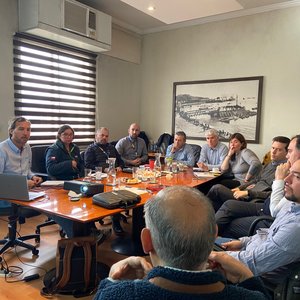The 12-week grow out trial was conducted at the Institute of Sustainable Aquaculture and Marine Ecosystems (ECOAQUA), Universidad de Las Palmas de Gran Canaria, Spain. Directed by researchers from the Aquaculture Research Group (GIA) and Aker BioMarine, triplicate groups of fingerlings were randomly distributed in six experimental tanks, at a density of 55 fish per tank, and fed manually one of three diets including either 3%, 6% or 9% krill meal three times a day.
Feed intake was calculated by recording uptake every day, as well as the number of uneaten pellets at each feeding point. There were no significant differences in feed intake between the control group and those fed krill meal during the trial, and survival was around 97% in all groups.
Results showed that the juveniles fed the 9% krill meal diet had significantly higher body weight (32.76 g), compared with fish fed the control diet (30.30 g). This is due to krill meal’s unique profile. Protein rich with strong palatability effect and naturally containing astaxanthin and chitin, it also has an excellent lipid and mineral profile.
In addition, the fish fed 9% krill meal also displayed a reduction in the accumulation of lipid droplets in the hepatocytes and around the pancreatic islets, showing a better feed utilization and therefore, promoting fish growth.
“Good nutrition is one of the four pillars for sustainable aquaculture,” commented Tibiabin Benitez-Santana, Director R&D Fish Nutrition, Aker BioMarine. “However, there is a raw material challenge in aquaculture, where we need to be more independent from fish meal. This seabream study is allied with industry-wide efforts to find alternative sources to fish meal and fish oil, using krill meal in aquafeeds. The findings suggest that krill meal enhances seabream juveniles’ growth, and reduces lipid accumulation in the liver, when fish meal is reduced.”
“The aquaculture industry’s goal should not be only about finding less-costly alternative sources, it should also strive to ensure that resources are used more efficiently, improving the productivity and environmental performance of aquaculture,” she added. “Krill meal could be the solution as it is a sustainable, nutritional solution for the aquaculture industry.”










